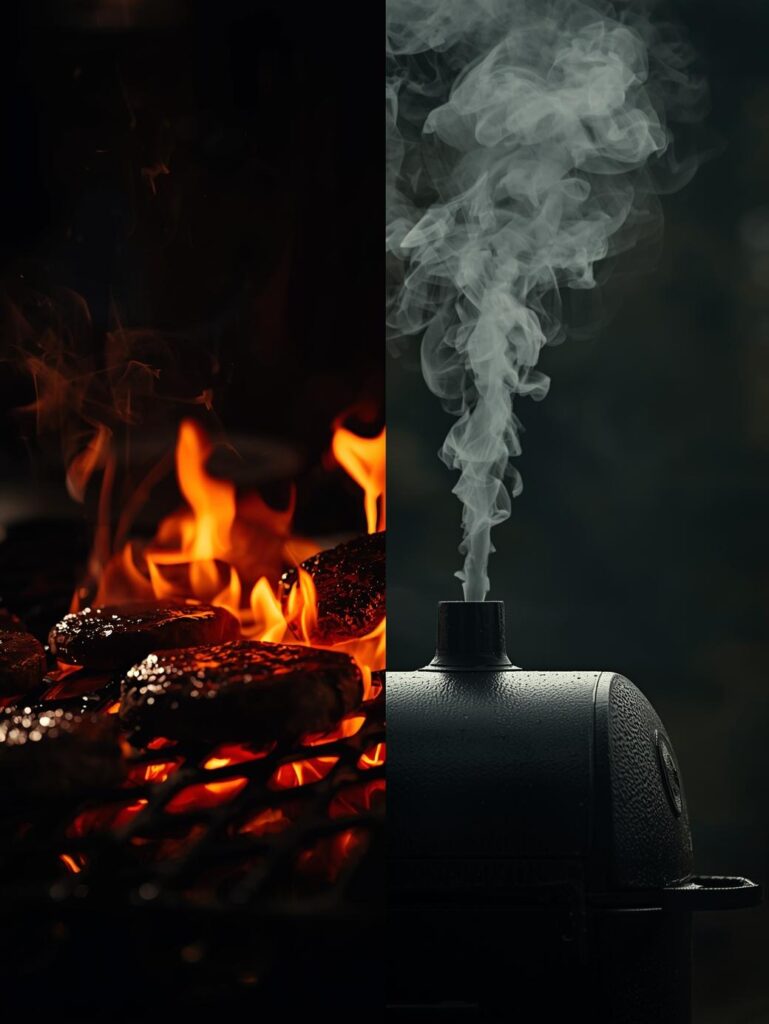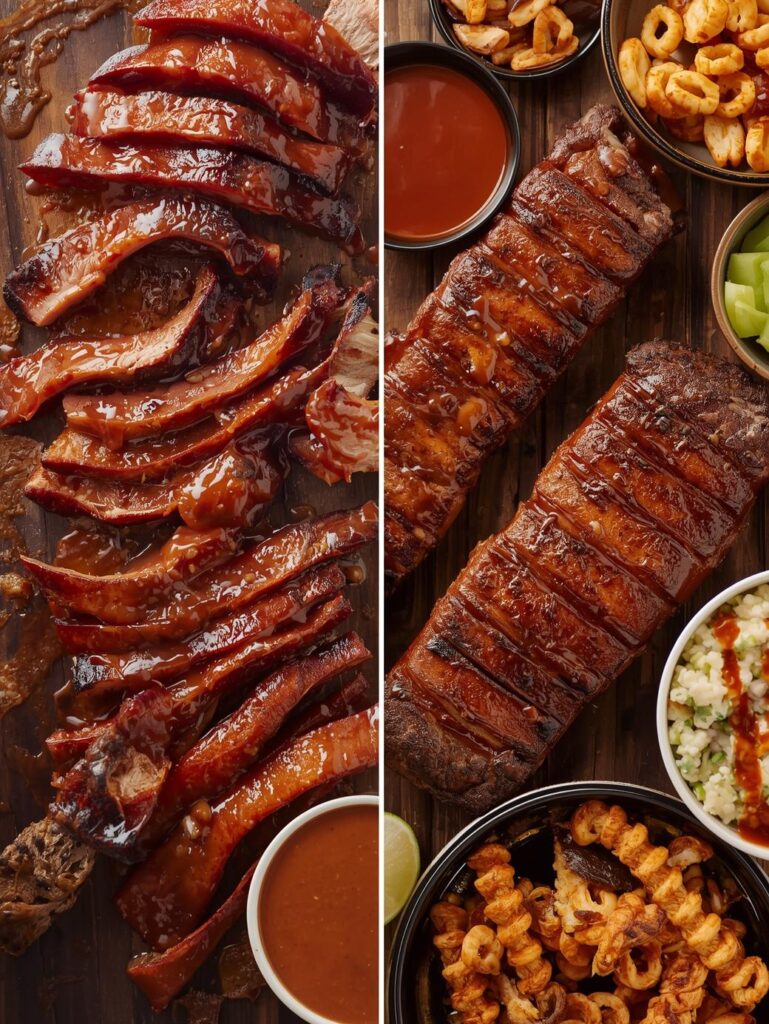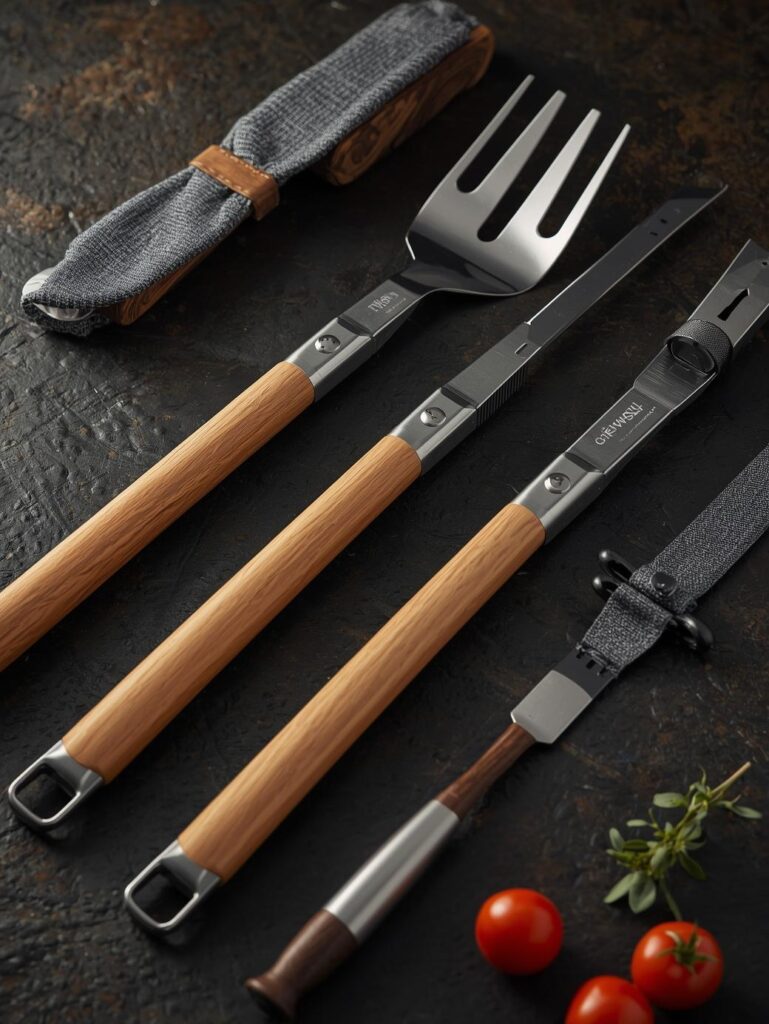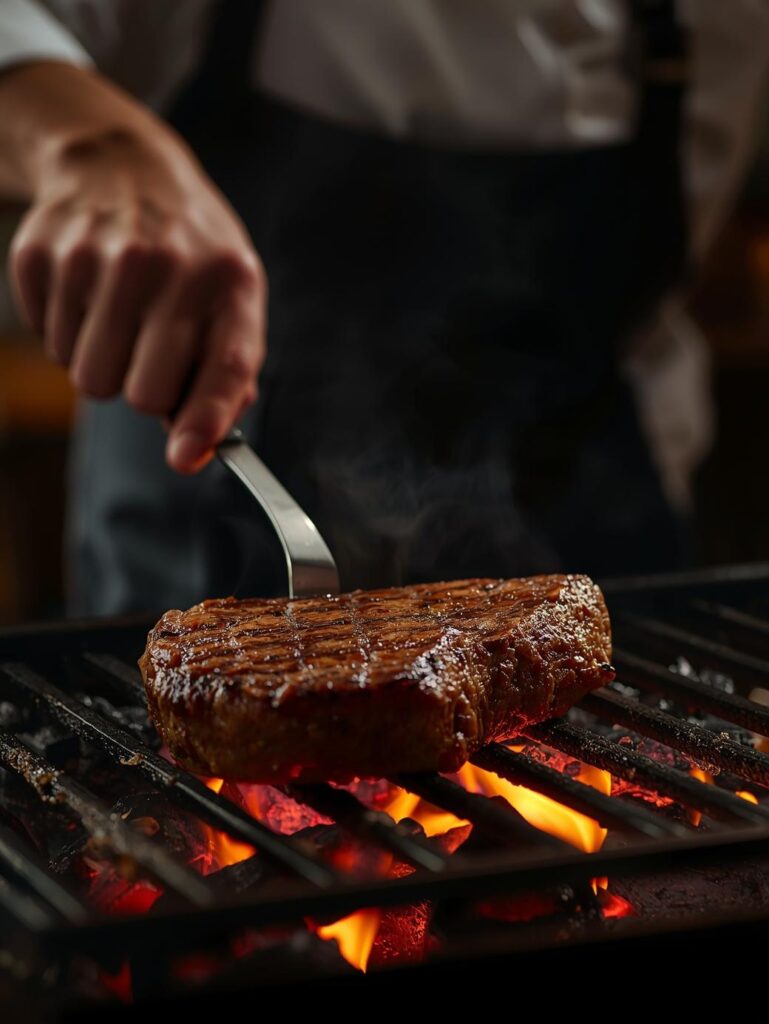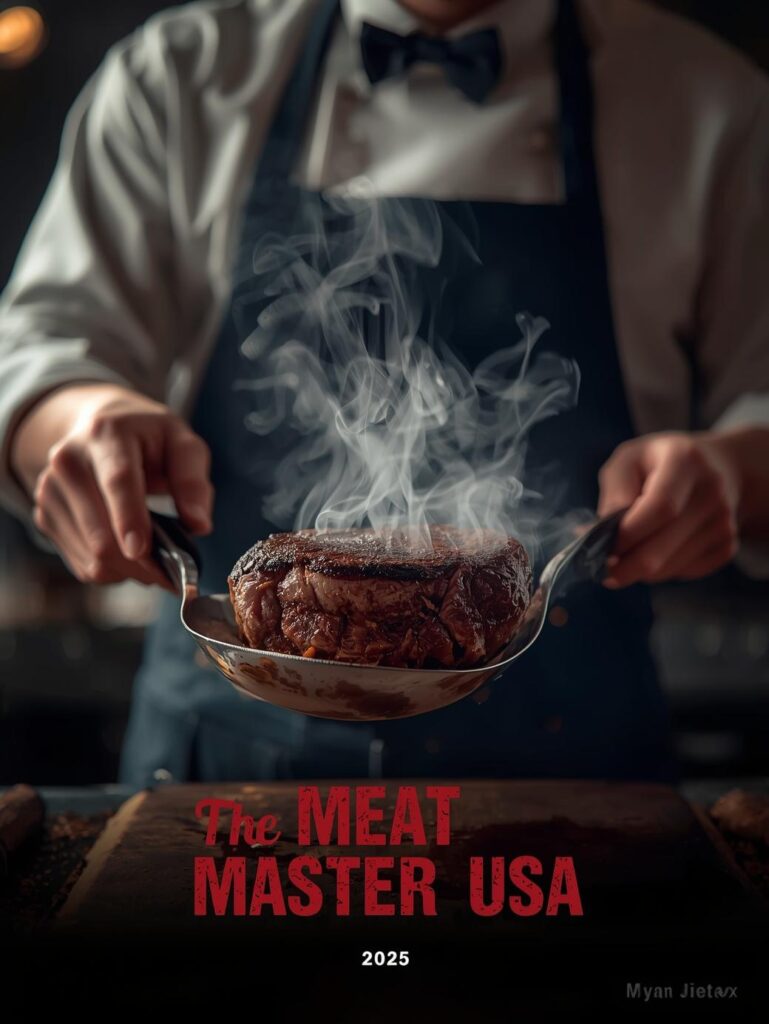Grilling vs Barbecuing: What’s the Difference?
It’s one of the most common debates at any summer cookout: are you grilling, or are you barbecuing? Many people use the terms interchangeably, but a true pitmaster knows the truth. The differences between grilling and barbecuing are not just semantic; they are the fundamental distinction between two completely different cooking methods. Mastering one does not mean you have mastered the other.
Understanding the core principles of grilling vs. barbecuing is the key to unlocking your full potential as a home cook. Once you know the why, you can use the right tool and technique for the job, ensuring every piece of meat, from a quick-seared steak to a slow-smoked brisket, comes out perfectly. Let’s break down the key differences to help you navigate the world of outdoor cooking.
At a Glance: Key Differences Between Grilling and Barbecuing
The easiest way to summarize the distinction is to remember a simple phrase: hot and fast vs. low and slow.
| Characteristic | Grilling | Barbecuing |
| Cooking Temperature | High (400-550°F) | Low (225-275°F) |
| Cooking Time | Short (Minutes to an hour) | Long (Multiple hours to a full day) |
| Heat Source | Direct, usually from below | Indirect, with an offset heat source |
| Ideal Cuts | Tender, thin cuts (steaks, burgers, chicken breast) | Tough, collagen-rich cuts (brisket, pork shoulder, ribs) |
| Flavor Profile | Charred, seared, smoky | Rich, smoky, tender, flavorful |
| Common Equipment | Gas grill, charcoal grill, flat-top grill | Smoker (offset, pellet, vertical), ceramic grill |
| Goal | Achieve a deep, savory crust and a juicy interior | Tenderize tough meat and infuse it with smoke |
Grilling: The Art of Hot and Fast Cooking
Think of grilling as a sprint. The goal is to cook food quickly over high, direct heat. This method is perfect for getting that beautiful sear, or Maillard reaction, on the outside of your food while keeping the inside juicy.
- Temperature: Grilling typically takes place at temperatures above 400°F. The high heat is what creates a deep, savory crust on the food’s surface.
- Heat Source: The food is placed directly over the heat source. This could be a gas flame, hot charcoal briquettes, or an electric heating element.
- Ideal Foods: Grilling is perfect for tender cuts of meat that don’t require a long time to break down. Burgers, steaks, hot dogs, chicken breast, shrimp, and vegetables are all great candidates for grilling.
- Flavor Profile: The flavor from grilling comes from two places: the char created by the high heat and the smoky flavor imparted by the burning fat and juices dripping onto the heat source.
- Technique: Grilling is about paying close attention to your food. You’ll need to flip it often to ensure even cooking and prevent burning. You should never walk away from a grill.
Barbecuing: The World of Low and Slow Smoking
Barbecuing is a marathon. This method involves cooking food at low temperatures over a long period. The goal is not a quick sear, but to transform tough, fatty cuts of meat into a fork-tender, melt-in-your-mouth masterpiece.
- Temperature: Barbecuing is all about maintaining a low, consistent temperature, typically between 225°F and 275°F. This is what allows the connective tissues in the meat to slowly break down into delicious gelatin. This is a crucial concept we cover in our guide on the 7 temperature mistakes for BBQ that destroy juiciness.
- Heat Source: The heat is indirect. The food is never placed directly over the flame or coals. Instead, it’s cooked in a chamber where a small, smoky fire is maintained to create a gentle, consistent heat.
- Ideal Foods: Barbecuing is for cuts that are naturally tough but full of flavor and fat. Brisket, pork shoulder, ribs, and beef ribs are the stars of the BBQ world.
- Flavor Profile: The signature flavor of barbecue comes from the smoke. As the food cooks slowly, it absorbs the smoke from the wood or charcoal, creating a rich, deeply smoky flavor that is unique to this cooking method. This is the main difference between smoking and grilling.
- Technique: Barbecuing is a hands-off process. Once the food is on, you just need to maintain a consistent temperature and let the magic happen.
The Core Grilling vs. Barbecuing Distinction: Temperature and Time
At the heart of the debate is the scientific difference between the two cooking methods.
- High Heat (Grilling): High heat denatures proteins quickly, which is what makes meat firm and can make it tough if overcooked. However, it also creates the Maillard reaction (the browning of amino acids and sugars), which produces hundreds of new flavor compounds. This is why a perfectly grilled steak has a deeply savory crust.
- Low and Slow (Barbecuing): The low temperature is critical for breaking down collagen, a tough protein found in connective tissue. Over several hours at a low temperature, this collagen melts and becomes gelatin. This is what makes a piece of brisket or pork shoulder so incredibly tender and juicy. The long cooking time also allows the meat to fully absorb the smoky flavor, which wouldn’t be possible with the quick-cook method of grilling. The difference in these barbecuing techniques is what makes barbecue so special.
Image Alt Text Suggestion: A digital meat thermometer reading a temperature of 250°F, emphasizing the “low and slow” aspect of BBQ and grilling.
Can I Barbecue on My Grill? The Equipment and Technique Crossover
This is a common question, and the answer is yes! You can use a standard gas or charcoal grill to barbecue; you just need to set it up for indirect heat.
- Charcoal Grill:
- Push all the lit charcoal to one side of the grill.
- Place a foil pan with water on the opposite side to catch drippings and add moisture.
- Place the meat on the grate over the water pan, not the coals.
- Close the lid, and adjust the vents to maintain a temperature between 225°F and 275°F.
- Gas Grill:
- Turn on one or two burners on one side of the grill and leave the other burners off.
- Place the meat on the grates over the burners that are off.
- Close the lid and use the burner knobs to adjust the temperature.
This two-zone cooking method is an essential grilling vs. barbecuing skill that allows you to get a great result without having to buy a dedicated smoker. It’s also a great way to handle tricky foods like chicken, as we discuss in our guide on 5 chicken grilling mistakes that cause dryness. The temperature management is key, as we show in our post on 7 temperature mistakes for BBQ that destroy juiciness.
Conclusion
At the end of the day, grilling and barbecuing are two different cooking methods with a common goal: to create delicious food. Grilling is for when you want a quick, hot, and delicious meal with a deep sear and a smoky flavor. Barbecuing is for when you want to take your time and transform a tough cut of meat into a tender, flavorful, and deeply smoky masterpiece. Understanding these key differences between grilling and barbecuing is the first step to becoming a true master of the flame. So, the next time you fire up your grill, ask yourself: is this a sprint or a marathon? The answer will tell you exactly what you need to do.
FAQ: Grilling vs. Barbecuing: What’s the Difference?
1. What’s the main difference between grilling and barbecuing?
The main difference is the cooking method and temperature. Grilling uses high, direct heat for a short period (hot and fast), while barbecuing uses low, indirect heat over a long period (low and slow).
2. What kind of food do you grill vs. barbecue?
You grill tender, thin cuts of meat like steaks, burgers, and chicken breasts. You barbecue tough, fatty cuts of meat like brisket, pork shoulder, and ribs.
3. Can I barbecue on a gas grill?
Yes, you can. You just need to set up a two-zone fire by turning on some burners and leaving others off. Place the meat over the unlit burners and close the lid to maintain a low, consistent temperature.
4. Why is barbecue called “low and slow”?
Barbecue is called “low and slow” because it requires a low cooking temperature (225-275°F) for a long period of time. This is necessary to break down the tough connective tissue in the meat, making it incredibly tender.
5. How does smoke affect barbecued food?
Smoke is a key component of barbecue. As the meat cooks over a long period, it absorbs the smoke from the wood or charcoal, which gives it a distinct, rich, smoky flavor.
6. Is one method better than the other?
No, one method is not better than the other. They are both valid cooking methods with different goals. The best method depends on the food you are cooking.
7. What about smoking? How does that fit in?
Smoking is a subset of barbecuing. Barbecuing involves a long, low-temperature cook, while smoking specifically refers to the process of using wood or charcoal to create smoke to flavor and preserve the food. All smoking is barbecuing, but not all barbecuing involves heavy smoking.

